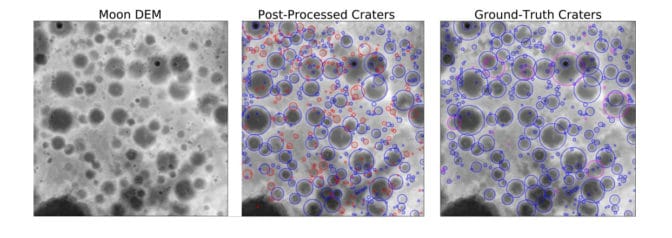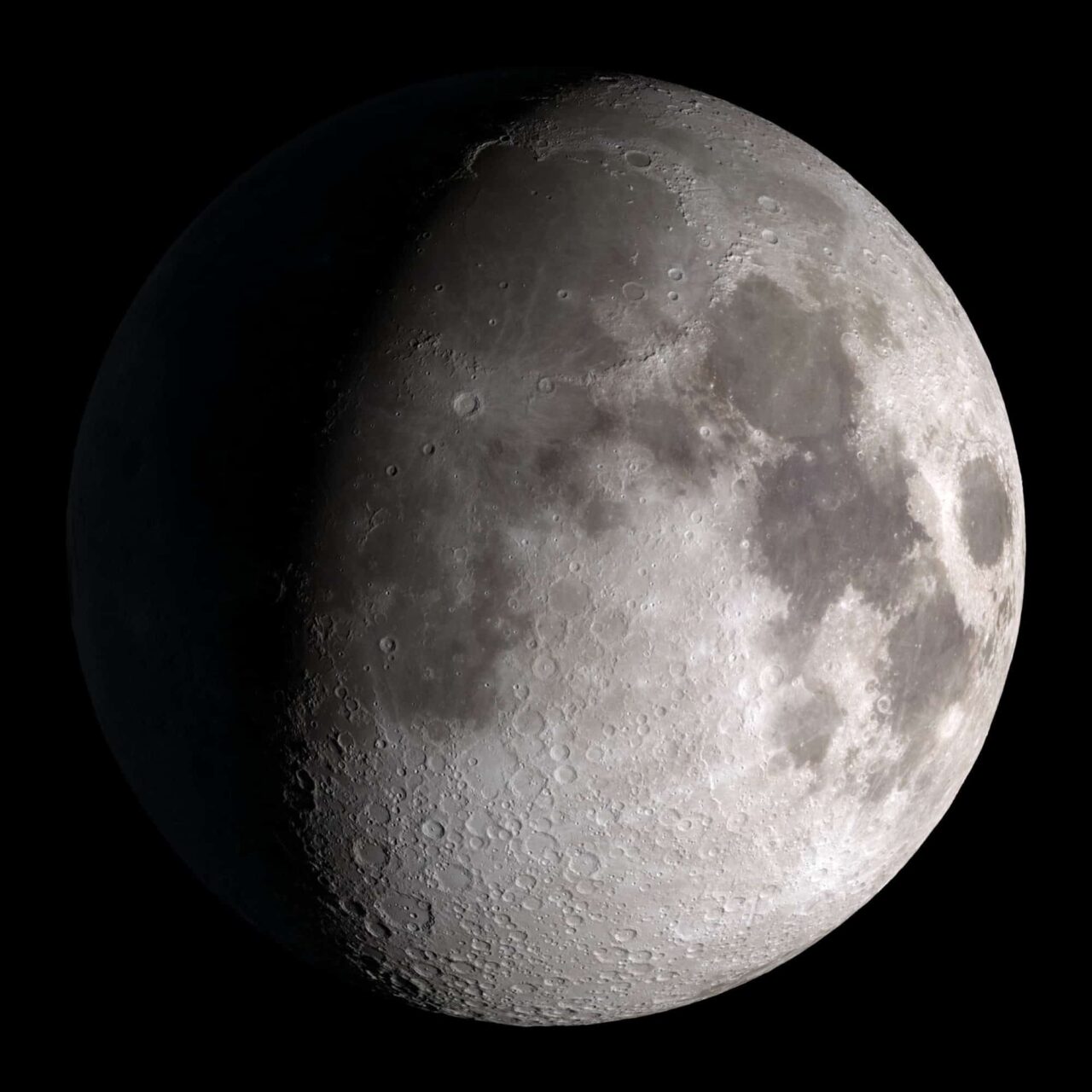The moon has captured humans’ imaginations for thousands of years — but an astronomical number of questions remain about its history, and the history of our solar system.
Some of the answers lie in the craters that pockmark the moon’s surface. And with deep learning, scientists are able to see these craters more clearly than ever before.
Think of crater research as “solar system archaeology,” says astrophysicist Mohamad Ali-Dib, a postdoctoral researcher at the University of Toronto’s Centre for Planetary Sciences.
Studying craters is a particularly useful way to study airless environments like the moon, Mercury and Mars, where topographical features remain relatively unchanged over time due to a lack of weather and geologic activity.
Taking a closer look at these craters provides scientists with important clues about both the history of that crater and the evolution of the solar system. But until now, craters were counted and measured by hand using images or altimetry data from satellites.
“We are aware of grad students whose full-time day job is to take images of Mercury, or the moon or Mars, and count every crater by hand,” Ali-Dib said. “It’s an extremely laborious job.”
There are a few problems with hand-counting, he points out. It takes “an army of grads and undergrads” to do the laborious and difficult work. And it’s a flawed system because research assistants may have different criteria for identifying craters — not to mention a drop in accuracy when they get tired.
So Ali-Dib, along with Ari Silburt and their fellow researchers at the university, developed a neural network that identified thousands of previously undiscovered lunar craters in a matter of hours.
Zooming In on the Moon
Craters come in all shapes and sizes, from ones large enough to hide the state of Vermont to tiny ones just a couple meters across. Mars is variously estimated to have between 300,000 and more than 635,000 craters, while the moon has millions.
Scientists are most interested in figuring out the size distribution: how many craters with a given radius exist on the surface. This distribution tells them how big and numerous the impactors that created the craters were, which is information that the astrophysicists can then link to theories of solar system collisions.
One such theory: giant planet instability. Some scientists theorize that in the early days of the solar system, the orbit of gas giants like Jupiter and Saturn became chaotic for a period of time. If this theory is true, the orbit disruption would have thrown asteroids all around the solar system, leading to brutal collisions. An event like that would leave its trace in the size distribution of craters on an environment like the moon.
By developing a computational way to log lunar craters, scientists can gain a better idea of their size distribution — which, in turn, gives them more data to validate current theories of solar system history.
The researchers used NVIDIA Tesla P100 GPUs on SciNet HPC Consortium’s P8 supercomputer for both training and inference.
When unleashed on images of the moon, the researchers’ convolutional neural network achieved 92 percent accuracy in finding craters that have already been identified — validation of its ability to correctly spot craters. On top of that, the deep learning model spotted 6,000 new craters in just a few hours. That’s nearly double the number that people have manually identified over decades of research.
Most of these, Ali-Dib noted, were the smaller craters the team was hoping to capture with the neural network. These tiny craters are missing from existing datasets because they’re too small and too many to spend expensive human time recording.

To the Moon, and Beyond
It’s not just the moon that could use a closer look like this: similar satellite data for Mercury and Mars exists. Other airless bodies like asteroids, comets and some of the giant planets’ moons could be studied in the future.
The researchers have already looked at Mercury’s craters using a technique called transfer learning: They took their neural network, which is trained on moon data, and used it to analyze images of Mercury.
The team is additionally looking at other features, like crater depth, for their future work. Another parameter of interest to scientists is the age of a crater. But it takes more than satellite data to figure that out, said Ali-Dib. “You need actual rocks for that.”
